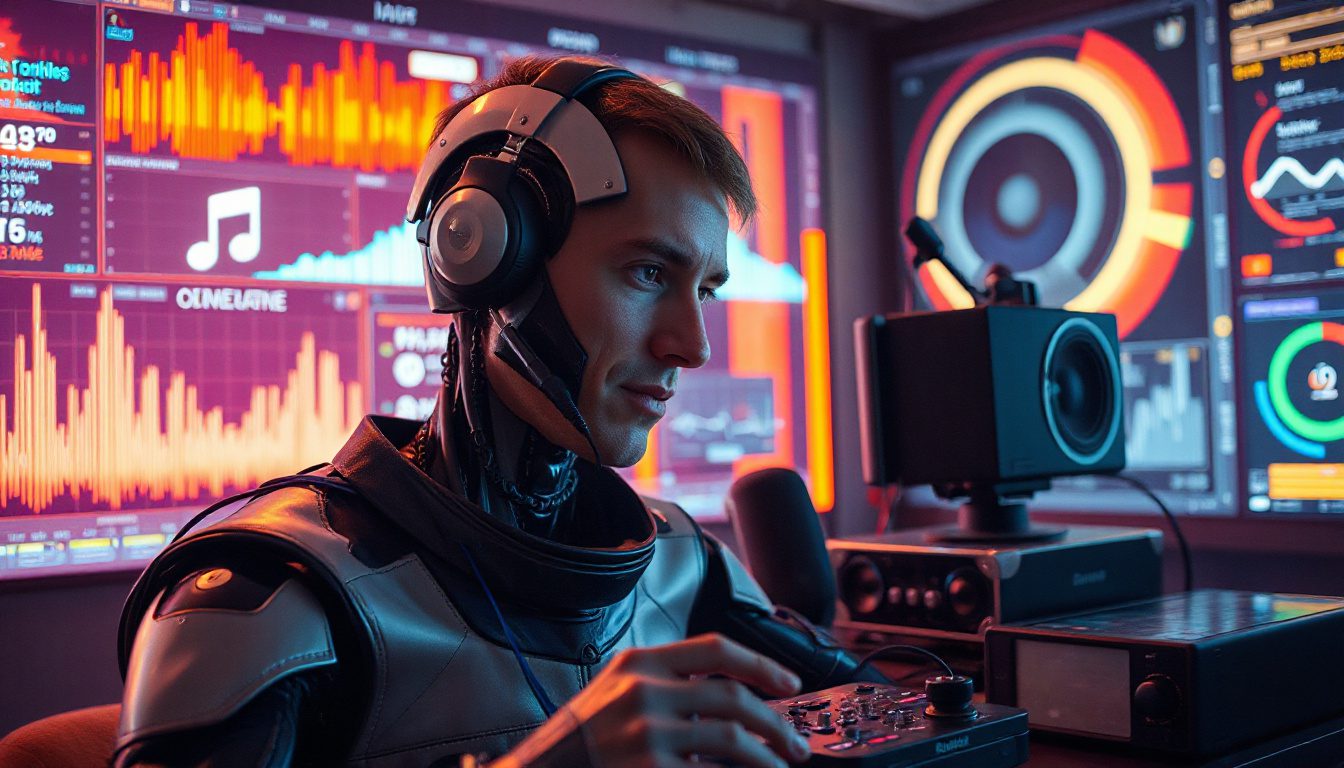How to Create Videos with Audio Using Free, Open-Source AI Tools
Have you ever wished to make fully animated videos with synchronized dialogue, background sounds, and character actions? You can do this using only text prompts. You can also create videos offline without recurring fees. Open-source AI like OVI makes this possible. This guide shows you how to create videos with real voice sync, simple body moves, and sound. All this runs with free software on your own computer.
What Is OVI and Why It Matters
OVI is an AI model that turns text into video. It reads short text and makes video and audio at the same time. The AI adds voice, sound effects like rain or footsteps, and background music. It also moves faces, lips, and bodies to match the words.
Here is why people find this tool exciting:
- Open source and free: You can download it and run it on your own machine. No ongoing fees come up later.
- Offline use: Once you install it, you do not need internet access. This helps users with slow or no connections.
- Multilingual support: You create videos with different languages. You can mix languages in one clip.
- Image to video: Start with a single image, then add movement and sound to make it live.
This tool works well for storytellers, teachers, marketers, and anyone who wants to make simple video content without pricey setups.
What Can You Create with OVI?
- Talking characters with natural lip sync: Put spoken lines inside special tags in your text. Choose the style of voice you need.
- Body and hand gestures: The AI moves hands and other body parts to suit the scene.
- Scene actions: Write simple instructions for movements and gaze shifts in your text.
- Sound effects and background audio: Insert tags for rain, doors closing, ambient sounds, or even singing.
- Multiple characters and languages: Change voices and languages in the text to make dynamic dialogue scenes.
For example, you can create a scene where a uniformed woman takes one step forward as she talks. Her face and hands change with each word. You can also simulate a conversation where one character speaks English and the other speaks German. The sounds in the background match the talk.
How to Access OVI
Online Platforms
If you lack a powerful GPU, you can try OVI on several online services. These services charge a fee for each video:
- waves.ai: Use text-to-video and image-to-video features. Sign up to get $1 in free credits. This credit makes about six videos at 15 cents each.
- foul.ai: This service has similar features. Each video costs about 20 cents.
- Replicate: This service focuses on image-to-video creation. It also costs around 20 cents per run.
- Hugging Face: Try OVI through an easy interface with no local setup needed.
These online sites help beginners get started, but they need an internet connection and cost money for each video.
Running OVI Locally
Using OVI on your own computer gives you full control. You pay no extra fees and keep your work private. You can also work offline. Here is what you need and how to set it up:
System Requirements
- GPU with CUDA support: A GPU with around 24GB VRAM is best, but 16GB can work with tweaks.
- Plenty of RAM: Extra system memory can help when the GPU memory is low.
- A Windows or Linux PC: Most guides use Windows, but Linux works as well.
Since OVI uses a lot of GPU power, a machine built for gaming, 3D work, or AI tasks is best.
Installation Overview
- Install Comfy UI: This free graphical tool helps you run AI models easily. Look for guides on how to install Comfy UI.
- Clone the OVI repository: Put the OVI code into the "custom nodes" folder of Comfy UI. This step adds the video and audio parts to the tool.
- Load the workflow: Use a community workflow called Comfy YOV. It makes using OVI inside Comfy UI simple.
- Run and generate: Write your text prompts with tags for speech, voice style, movement, and background sound. Then run the process to create a video file on your machine.
Though these steps may seem technical, many guides and forums support you along the way.
Tips to Maximize Your OVI Videos
- Keep prompts clear: Use simple tags to mark spoken words.
- Set voices and sounds: Write tags to pick voice types and audio.
- Plan movements: Add clear instructions for actions like hand waves or looking around.
- Test with small clips: Run short videos to fine-tune your text before making longer ones.
- Mix languages: Try dialogues with more than one language for varied scenes.
- Combine with images: Start with a photo to make a video that feels personal.
Why Running Locally Beats Online Services
While online sites let you try quickly, using your own computer gives you more:
- Privacy: Your work stays on your machine.
- Unlimited use: Once set up, your hardware runs as many videos as it can handle.
- No net need: Work offline even in secure or low-connection settings.
- Flexibility: Change the model, try new workflows, or update the tool at your own pace.
What’s Next?
To start with your own AI-made videos with sound:
- Get Comfy UI and install it on your PC.
- Visit the OVI GitHub page and copy the needed files.
- Experiment with text prompts and scene details to improve your videos.
- Join online groups or forums on open-source AI video creation for tips and shared ideas.
In the past, creating videos with synchronized voice, sound, and movement needed big studios. Today, you can make engaging scenes with simple text using free AI tools. The path to creative storytelling now lies in your hands.
Try to make your first AI video today, and see where this new tool takes your stories.


